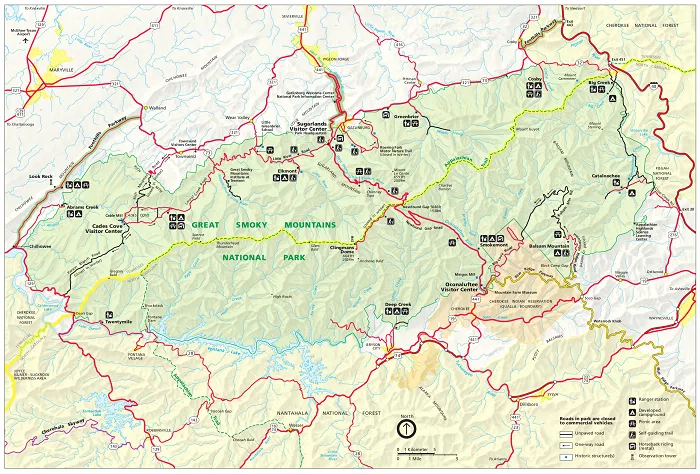Nevada, often dubbed the “Silver State,” is renowned for its rich mining history and diverse landscapes. Beyond its expansive deserts and bustling cities, Nevada boasts a plethora of mountain ranges that contribute significantly to its natural beauty and ecological diversity. Understanding the distribution and characteristics of these mountains offers insight into the state’s geological history and recreational opportunities.
The topography of Nevada is predominantly defined by its mountainous terrain, interspersed with valleys and basins. These mountains not only shape the state’s climate and ecology but also offer a myriad of recreational activities, from hiking and skiing to wildlife observation. A comprehensive map of Nevada’s mountains reveals the intricate patterns of these ranges, highlighting their elevations, orientations, and the geological forces that formed them.
Major Mountain Ranges in Nevada
Nevada’s mountainous regions are diverse, each with unique features and significance. Here’s an overview of some of the most prominent mountain ranges:
Sierra Nevada
- Location: Western Nevada, forming the state’s border with California.
- Highest Peak: Boundary Peak at 13,140 feet (4,002 meters).
- Features: Characterized by rugged terrain, alpine lakes, and dense forests. The Sierra Nevada is a significant source of the Truckee and Carson rivers.
Ruby Mountains
- Location: Northeastern Nevada, primarily in Elko County.
- Highest Peak: Ruby Dome at 11,387 feet (3,472 meters).
- Features: Often referred to as the “Swiss Alps of Nevada,” this range is known for its steep cliffs, alpine lakes, and diverse wildlife.
Spring Mountains
- Location: Southern Nevada, near Las Vegas.
- Highest Peak: Mount Charleston at 11,918 feet (3,632 meters).
- Features: A popular destination for hiking, skiing, and escaping the desert heat, offering a stark contrast to the surrounding arid landscape.
Humboldt Range
- Location: Western Nevada, extending from the Black Rock Desert to the Humboldt River.
- Highest Peak: Star Peak at 9,878 feet (3,016 meters).
- Features: This range is known for its volcanic origins and rich biodiversity.
Toiyabe Range
- Location: Central Nevada, running parallel to the Sierra Nevada.
- Highest Peak: Toiyabe Dome at 11,204 feet (3,419 meters).
- Features: Characterized by its remote wilderness areas and unique geological formations.
Jarbidge Mountains
- Location: Northeastern Nevada, near the Idaho border.
- Highest Peak: Matterhorn at 10,775 feet (3,284 meters).
- Features: Known for its rugged terrain and as a haven for outdoor enthusiasts seeking solitude.
Schell Creek Range
- Location: Eastern Nevada, within the Great Basin.
- Highest Peak: Schell Peak at 11,883 feet (3,628 meters).
- Features: This range offers diverse ecosystems and is part of the Humboldt-Toiyabe National Forest.
Egan Range
- Location: Central Nevada, between the valleys of the Humboldt and Snake rivers.
- Highest Peak: Ward Mountain at 10,778 feet (3,285 meters).
- Features: The Egan Range is noted for its rich mining history and scenic landscapes.
Monitor Range
- Location: Western Nevada, near the town of Austin.
- Highest Peak: Monitor Peak at 10,200 feet (3,109 meters).
- Features: Renowned for its geological features and as a site for fossil discoveries.
Pah Rah Range
- Location: Western Nevada, northeast of Reno.
- Highest Peak: Virginia Peak at 9,293 feet (2,832 meters).
- Features: Offers hiking opportunities with panoramic views of the surrounding valleys.
Utilizing Maps for Exploration
For those interested in exploring Nevada’s mountainous regions, detailed maps are invaluable. They provide information on trailheads, elevation changes, water sources, and points of interest. Resources such as the Bureau of Land Management’s surface management maps offer comprehensive insights into land ownership, recreational areas, and protected lands.
Conclusion
Nevada’s mountain ranges are a testament to the state’s geological diversity and natural beauty. From the towering peaks of the Sierra Nevada to the secluded heights of the Jarbidge Mountains, these ranges offer a wealth of opportunities for exploration, recreation, and appreciation of the natural world. Whether you’re an avid mountaineer, a casual hiker, or a geology enthusiast, Nevada’s mountains provide landscapes that inspire and challenge.

